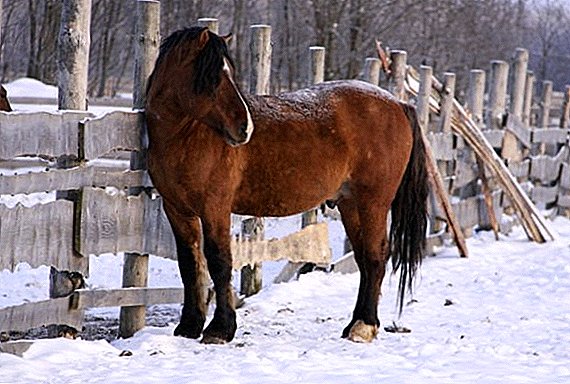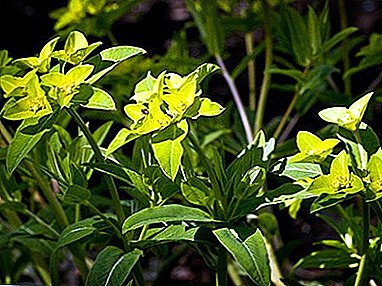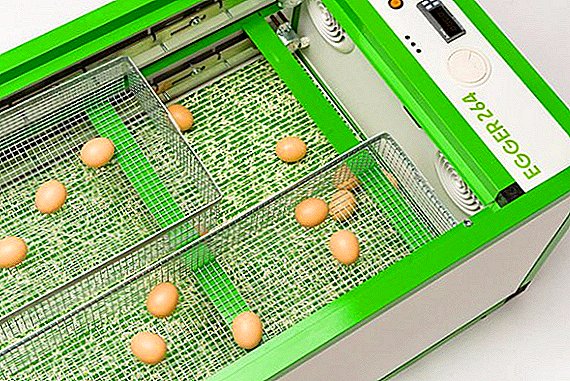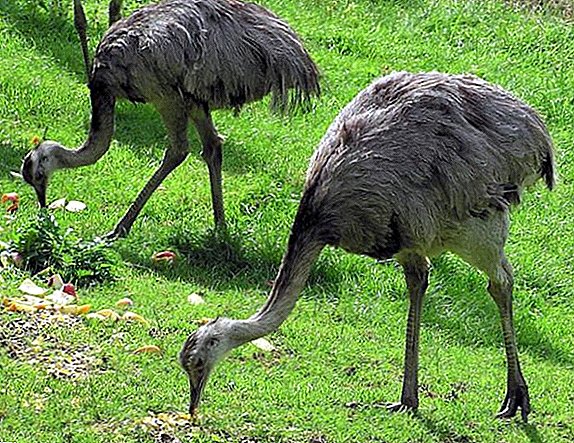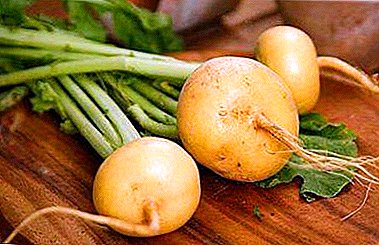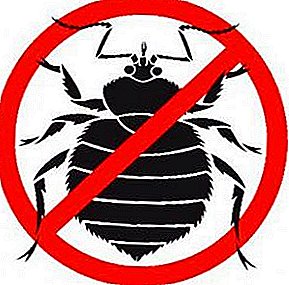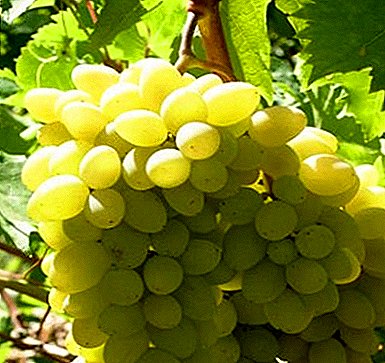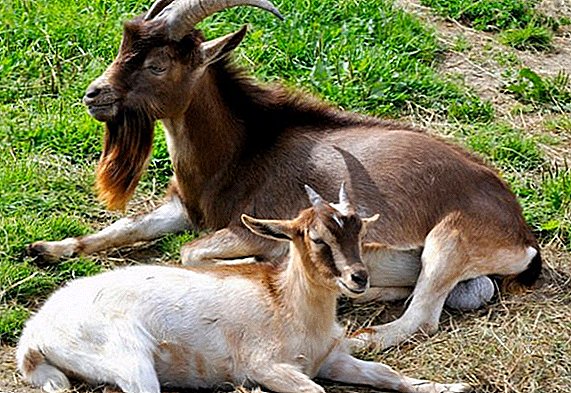 Today, breeding domestic goats has become quite popular on farms. Their content is a very profitable business due to the beneficial properties of goat milk, its high price compared with cow's and ease of care for these animals, but still sometimes problems arise.
Today, breeding domestic goats has become quite popular on farms. Their content is a very profitable business due to the beneficial properties of goat milk, its high price compared with cow's and ease of care for these animals, but still sometimes problems arise.
One of these troubles is ketosis. What is ketosis in a goat?
What a disease
Ketosis is a group of serious diseases that affect animals (cattle, goats, pigs, sheep). The disease is a metabolic disorder: proteins, fats and carbohydrates. 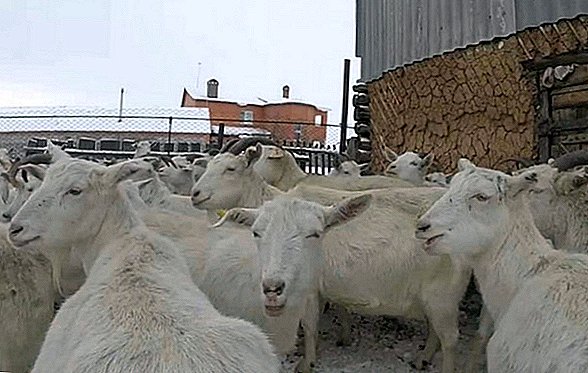 As a result, such a failure is accompanied by the accumulation in the blood plasma, urine, milk, and soft tissues of the body of a huge amount of ketone bodies - categories of metabolic products that are formed in the liver (acetone, acetoacetate, beta-hydroxybutyrate).
As a result, such a failure is accompanied by the accumulation in the blood plasma, urine, milk, and soft tissues of the body of a huge amount of ketone bodies - categories of metabolic products that are formed in the liver (acetone, acetoacetate, beta-hydroxybutyrate).
In this case, the alkaline reserve of blood (the amount of carbon dioxide) will be normal or reduced, depending on how quickly the disease progresses.
Did you know? Ketosis has also become a human disease as a result of evolution. This is due to the fact that we try to consume less carbohydrates, so our body breaks down fats with the formation of a large number of ketone bodies.Veterinarians distinguish between two types of ketosis: primary and secondary. Primary occurs most often, it is characterized by metabolic problems of the animal’s body and a deficiency of light carbohydrates during the active formation of milk.
 Secondary is more rare, the disease is provoked by feed intoxication, inflammation of the intestine, puerperal paresis and traumatic reticulitis (inflammation of the second pre-stomach).
Secondary is more rare, the disease is provoked by feed intoxication, inflammation of the intestine, puerperal paresis and traumatic reticulitis (inflammation of the second pre-stomach).The manifestation of a disease such as ketosis in a goat causes indigestion, degenerative changes in the liver, impaired function of the adrenal system, hypoglycemia - a decrease in the concentration of glucose in the blood.
Familiarize yourself with the best breeds of goats, especially from the Alpine, Boer and dairy goats - La Mancha.
Causes of infection
As a rule, ketosis refers to non-lean, highly productive goats predominantly during lactation. There are four main factors that usually cause disease. The first cause of infection is an unbalanced diet: an excess of protein and fat, lack of carbohydrates.  Thus, there comes a kind of carbohydrate starvation. Diseases tend to develop on the basis of the lack of trace elements and nutrients: calcium, iodine, magnesium, zinc, manganese, cobalt, potassium.
Thus, there comes a kind of carbohydrate starvation. Diseases tend to develop on the basis of the lack of trace elements and nutrients: calcium, iodine, magnesium, zinc, manganese, cobalt, potassium.
Doctors claim that the main cause of ketosis is poor-quality synthetic food or host omissions in the diet of a pet.
Too concentrated non-natural mixture, consumed by a goat, knocks down the biological synthesis of propionic acid, microbial protein, which is concentrated in the pre-stomachs, vitamin B. In turn, this leads to inhibition of the production of certain hormones, digestive enzymes, protein and nucleic acids.
Sometimes the owners of animals excessively fed goats with hay and silage. They contain a large amount of acid: oil and acetic acid. During digestion, many volatile fatty acids are formed.  Excess protein leads to an imbalance of the thyroid gland, which further leads to metabolic disorders of the whole body of the goat.
Excess protein leads to an imbalance of the thyroid gland, which further leads to metabolic disorders of the whole body of the goat.
In addition to unbalanced nutrition, the cause of ketosis in a pet can be severe obesity, which with age occurs in the animal's body at the genetic level. Here the human factor of feeding does not play a special role.
Important! Lack of sunlight, fresh air and reduced activity can be predisposing factors for ketosis in a goat.Also, the disease in some cases is associated with problems of the functioning of the endocrine system, which causes damage to other vital organs. As a result, the secretion of certain hormones is disturbed: glucocorticoids, androgens, adrenocorticotropic and thyroid substances.
 Such processes contribute to the emergence of diseases of the ankles and deterioration of goat digestion. Consequently, ketosis appears in a pet.
Such processes contribute to the emergence of diseases of the ankles and deterioration of goat digestion. Consequently, ketosis appears in a pet.Signs of goat disease
The pathology is sluggish, so for a long time it will not be felt, but nevertheless the goat ketosis does not get sick in a latent form, so it can be noticed by carefully watching the animals. The disease is divided into two phases, but the first may not appear at all.
It will be useful for you to learn about the features of goat selection, about the goat's diet, about the rules of keeping dairy goats, all about breeding, about how to build a goat shed, about the features of feeding goats in winter.The main symptoms of infection of the first phase of domestic goats are the following:
- increased sensitivity to tactile contact;
- great agitation;
- unusual loud sounds that the animal makes;
- aggressive behavior.

The second phase of ketosis, which will definitely be pronounced, is characterized by:
- lethargy;
- inactivity;
- dim wool and hoofed horn;
- a decrease in the amount of milk;
- a strong enlargement of the liver (visually the right side will be much larger than the left);
- sleepiness;
- slow / no reaction;
- poor appetite / refusal to eat;
- constipation;
- diarrhea;
- frequent breathing;
- reduced productivity;
- irregular gum development;
- strong tachycardia.
Important! The main signal that a goat develops ketosis is the unpleasant, sharp acetone smell of milk and other products of its vital activity.These symptoms usually appear in the complex and regularly.

Diagnostics
If the goat has the first symptoms of ketosis, then it should be shown as soon as possible to the veterinarian. Experts will conduct a survey and identify the clinical signs of the disease, depending on its stage:
- hypotonia of the foreskins;
- lowering body temperature;
- atony;
- enlarged liver;
- violation of reproductive function;
- polypnoea;
- dystrophic changes of the heart and kidneys;
- sluggish intestinal peristalsis;
- cardiovascular failure.
Did you know? There is a practice of artificially provoking ketosis for the treatment of epileptic diseases.Chronic disease does not allow doctors to make a diagnosis without laboratory tests. These studies should show the presence in the blood, and then in the milk and urine of an animal, a large amount of acetone (up to 30 mg), amino acids, and lactic acids.
 This is necessarily accompanied by a decrease in glucose, proteins, hemoglobin. Sometimes, due to involvement in the pathological processes of the liver or other organs, there can be an absence of ketonemia.
This is necessarily accompanied by a decrease in glucose, proteins, hemoglobin. Sometimes, due to involvement in the pathological processes of the liver or other organs, there can be an absence of ketonemia.This manifestation is associated with oil oxidation.
In this case, it will take more time to examine the animal and diagnose it, since the disease will have similar symptoms with other infections of domestic goats, for example, with banal poisoning.
It will also be useful for you to learn about methods of fighting goat diseases such as smallpox and foot and mouth disease.
Treatment methods
Ketosis is a serious disease, therefore, as soon as a diagnosis has been made, it is necessary to begin treatment. It is advisable to contact the experts, and not to do it yourself at home. Remember that self-medication can harm your animal.
To improve the condition of the goat, it is necessary to normalize the blood sugar level, the work of the endocrine system, to achieve alkaline-intestinal balance, to achieve the norm of all indicators, the failure of which was previously demonstrated by laboratory tests. 
To this end, the animal is prescribed the necessary drugs:
- Glucose (40% solution) - 1 mg / 1 kg mass of the animal.
- Insulin - 0.5 units / 1 kg of animal weight.
- Hydrocortisone - 1 mg / 1 kg of animal weight.
- Adrenocorticotropic hormone (ACTH) - 300 units.
- Liquid Sharabrin A / B.
- Sodium lactate.
- Vitamin A, E.
- Choline chloride.
- Sodium propionate.
To reduce the acidity of the stomach and the rumen, it is customary to add baking soda to the animal’s food at a rate of 15–20 g per day or substances of similar effect.  This course is carried out for 2-3 weeks.
This course is carried out for 2-3 weeks.
At the time of treatment they change the diet of the goat, they add carbohydrates that are easily digested: beets, carrots, as well as protein, vitamins of all groups and various other microelements.
Feeding must be balanced and nutritious so that the animal has enough energy and can fight ketosis. As a rule, examinations during treatment are carried out once every 5 days. Based on the changes in the physical condition of the domestic goat, new preparations are prescribed and recommendations are given that relate to the diet.
In case of timely reasonable treatment and compliance with the doctor’s instructions, the goat will achieve full recovery within 1-2 months, and in particularly severe forms of the disease this process can last up to 4 months. Deaths due to ketosis are very rare.  After the animal suffers such a difficult disease, its body will be weakened and will require special attention in the care.
After the animal suffers such a difficult disease, its body will be weakened and will require special attention in the care.
Prevention
Disease prevention will help protect your domestic goats from ketosis. It includes such actions:
- Diet control for the presence in it of a harmonious combination of proteins, fats, carbohydrates, all groups of vitamins, microelements. Preference to natural grass / hay, refusal from chemical mixtures of factory origin.
- Periodic addition to the diet of glucose, mineral supplements.
- Particular attention is paid to protein, the presence of which should be in the amount of 100 g per 1 feed unit.
- Only fresh food.
- Monitoring the activity and productivity of the animal.
- Sufficient time in fresh air and sunshine.
- Active exercise goats.
- Track changes in animal weight.
- Providing continuous access to water.
 Doctors believe that the implementation of such simple recommendations reduces the likelihood of ketosis by 60%. Take care of your domestic goats and they will be healthy. And if you still had to deal with ketosis in an animal, then do not despair. The most important thing is to contact an experienced specialist soon, because this disease is completely curable.
Doctors believe that the implementation of such simple recommendations reduces the likelihood of ketosis by 60%. Take care of your domestic goats and they will be healthy. And if you still had to deal with ketosis in an animal, then do not despair. The most important thing is to contact an experienced specialist soon, because this disease is completely curable.

